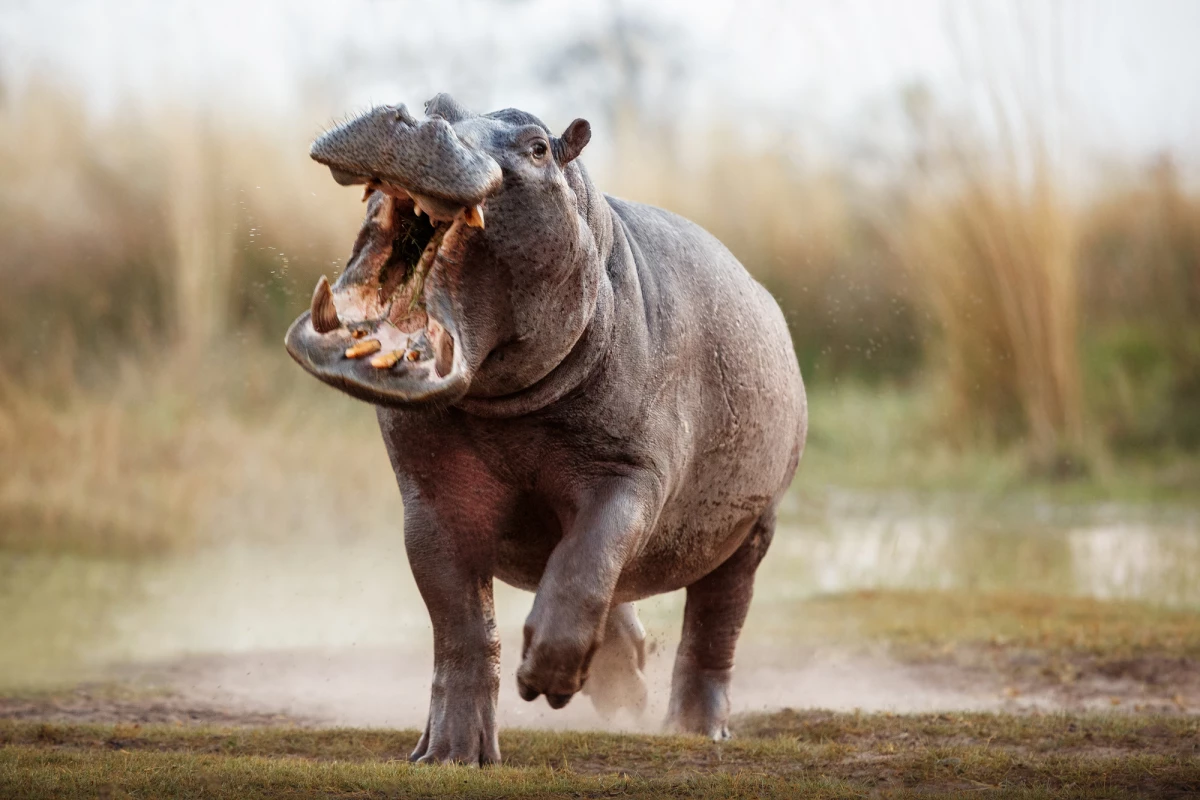For the first time, scientists have discovered that hippos get significant airtime when they're at full-trot, able to lift their enormous bodies off the ground for around 15% of their stride. It's unique among mammals their size, with both elephants and rhinoceros staying grounded at speed.
Researchers from the UK's Royal Veterinary College (RVC) filled this sizeable gap in knowledge by studying 169 strides from 32 hippopotamuses (Hippopotamus amphibius). They found that not only did hippos almost exclusively trot, regardless of pace, when they put the foot on the accelerator they also took to the air.
The fastest hippos even became airborne for around 15% of that stride, or 0.3 seconds. While it's not unusual for ungulates (mammals with hoofed feet), such as horses, it's unlike other animals that compare in size; an adult male weighs an average of 3,260 lb (1,500 kg). Pretty impressive stuff for an animal shaped like a barrel atop short, stubby legs – and perhaps some inspiration, next time you're out on a jog, dragging your feet along the pavement ...

"It’s hard to work with hippos as they tend to stick to the water, and very seldom are trained to be studied in zoo collections," said study lead author John Hutchinson, Professor of Evolutionary Biomechanics at RVC. "They’re also very dangerous. That’s part of the reason why science knew little about how hippos move before our research."
Why do we need to know this? Knowing more about an animal's gait helps wildlife carers assess health from afar – which is, of course, where you want to be, and with a good fence in between, if in the presence of a hippopotamus 'trotting' towards you. It also sheds light on evolution and the diversity of locomotion across ungulate orders.
While they may not possess the grace of a galloping horse, there's something rather endearing about their steady, quick pace – and it works, they can reach a decent pace of 19 mph (30 km/h). However, it also looks to take it out of them, with the hippos in the video above glistening with their unique red-pink-hued sweat.
While the researchers were unable to collect data on velocity, or other more intricate biometric measures, it upends previous studies on hippo gait, which likened the animal's locomotion to be more like elephants.
Next up, we'd really like a comparative study with Pablo Escobar's 'cocaine hippos' rampaging across Colombia.
“We’re thrilled to provide the first study purely focused on revealing how hippos walk and run," said Hutchinson. "We were pleasantly surprised to see how hippos get airborne when they move quickly – it’s really impressive!”
Hippos, of course, are deadly animals that are said to kill around 500 humans every year. However they don't even make the top 10 of most lethal species, coming in at 13th, behind freshwater snails (10,000), dogs (13,000) and, of course, Homo sapiens (546,000).
“Understanding more about the species we work with, will only help us to improve the care we can give them in the future, and the fact that this paper has uncovered possible new discoveries into hippo locomotion could have positive impacts to the wider zoo community in regards to husbandry and enclosure design," said Kieran Holliday, Science and Conservation Officer at Flamingo Land Resort, which houses many of the hippos studied.
The study was published in the journal PeerJ.
Source: Royal Veterinary College





